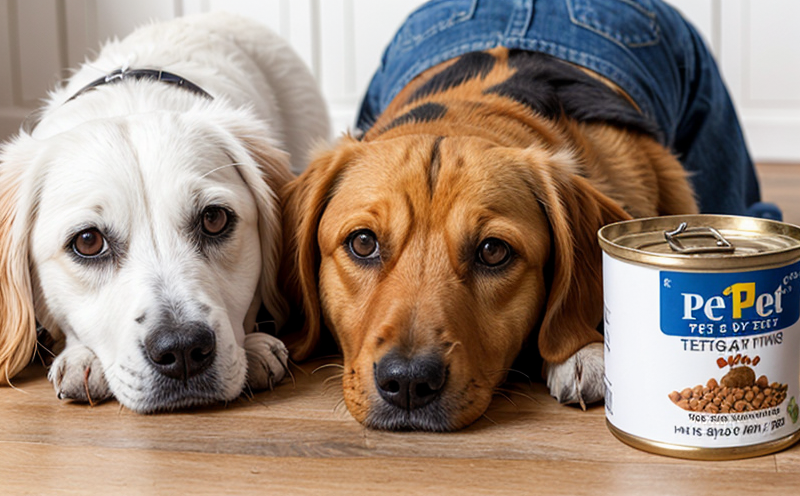ISO 6492 Crude Fat Profiling in Pet Food Samples
The ISO 6492 standard provides a robust framework for the determination of crude fat content and its profiling in pet food samples. This service is crucial for ensuring the nutritional quality and safety of pet foods, which directly impacts the health and well-being of pets. For quality managers and compliance officers, this service ensures that pet food products meet strict regulatory standards and industry benchmarks.
Understanding the composition of crude fat in pet foods is essential because it contributes significantly to the caloric density and overall nutritional profile of the product. The standard focuses on detailed profiling rather than just a simple quantitative determination, which allows for more comprehensive analysis of the fat content. This includes understanding the types of fats present, their proportions, and any potential contaminants.
In terms of methodology, the ISO 6492 protocol involves precise sample preparation, followed by gravimetric or calorimetric analysis to determine crude fat content. The process is meticulously designed to minimize errors and ensure accurate results. For R&D engineers, this service provides insights into how different ingredients affect the fat profile, which can inform formulation decisions.
The importance of this service extends beyond compliance; it also aids in product development by identifying potential areas for improvement or innovation. Procurement professionals benefit from this service as well because they gain a deeper understanding of the suppliers' capabilities and the quality of raw materials used.
Crude fat profiling is particularly critical in pet food testing due to the high variability in ingredients sourced globally. Understanding the crude fat content helps in standardizing product formulations across different regions, ensuring consistency in nutritional value and palatability for pets worldwide.
The ISO 6492 protocol ensures that all pet foods meet stringent quality standards set by regulatory bodies like the FDA (Food and Drug Administration) and EU regulations. This service supports compliance with these standards, thereby protecting both consumers and manufacturers from potential risks associated with non-compliant products.
Scope and Methodology
| Aspect | Description |
|---|---|
| Sample Preparation | The pet food sample is ground to pass through a 1 mm sieve, ensuring homogeneity. This step is critical for accurate analysis. |
| Determination of Crude Fat Content | This involves gravimetric or calorimetric methods as specified in ISO 6492. The gravimetric method measures the loss on ignition (LOI), while the calorimetric method quantifies heat release during combustion. |
| Profiling of Fatty Acids | The fatty acid composition is analyzed using gas chromatography for detailed profiling. |
Industry Applications
- Determining the caloric density and nutritional content of pet food products.
- Ensuring compliance with international regulatory standards like FDA and EU regulations.
- Supporting research and development in formulating balanced diets for pets.
- Aiding procurement teams in selecting high-quality raw materials from reliable suppliers.
Competitive Advantage and Market Impact
- Enhances product differentiation through detailed fat profiling, which can be a key selling point to consumers.
- Improves brand reputation by ensuring consistent quality and safety of pet food products.
- Paves the way for innovation in formulating new pet foods tailored to specific health needs or dietary preferences.





